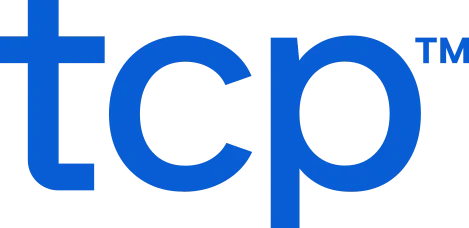Payroll might not be the flashiest part of running a business, but it’s one of the most important. Have you ever tried paying people late or less than they’re owed? Getting payroll right is non-negotiable.
Whether you’re managing shift-based staff or salaried teams, the stakes are high especially as they grow and the rules around taxes, compliance, and labor laws evolve. Time. Trust. Legal trouble. One mistake can cost you all of it, which is why your approach to payroll management shouldn’t be an afterthought.
This article walks you through what payroll management means, what it includes, and how to build a process that actually works for your organization.
What payroll management actually means
Payroll management includes the tools and processes that help you get people paid correctly. It includes everything from collecting time data to filing taxes — when it works well, payroll systems keep your teams running smoothly and your organization in good standing.
Payroll is how you turn time and effort into a paycheck, and how you turn that paycheck into trust. Whether you’re tracking hours or managing complex compensation structures, payroll needs to be clear, consistent, and correct every time.
Strong payroll management practices impact the whole organization, reducing risk, supporting employee satisfaction, and improving efficiency in your HR and finance operations.
What’s included in payroll management
Payroll management brings structure to every step of how your organization compensates its workforce. From time tracking to tax filing, here’s what it typically includes:
| Payroll Process Step | Description |
|---|---|
| Collecting employee wage and tax data | Includes salary information, deductions, benefits, and tax withholdings. |
| Tracking time worked or output earned | Captures actual hours, shifts, or production units that impact employee pay. |
| Calculating gross pay, deductions, and net pay | Determines what employees have earned and what must be withheld. |
| Issuing payments | Sends accurate, timely compensation via direct deposit, check, or pay card. |
| Filing payroll taxes and creating reports | Ensures tax submissions are accurate, timely, and audit-ready. |
How payroll fits into workforce operations
Payroll touches every part of your organization, not just the back-office:
- HR teams rely on it for benefits and leave management data
- Finance teams use it for budget forecasting
- All employees expect it to be reliable every pay cycle
Effective payroll processing makes for smoother operations, reduces manual workload and supports long-term workforce health.
Why payroll management matters more than you think
When payroll runs smoothly, no one notices. But when it goes wrong, it becomes the fastest way to lose employee trust and rack up costly penalties.
Maybe you’ve got teams doing remote work. Or you’re facing tighter labor law compliance rules and increased scrutiny of worker classification and pay equity.
The importance of payroll has only increased in recent years for credibility and protecting your business.
Accuracy isn’t optional
Employees depend on accurate and timely pay. A single miscalculation — even one cent off — can cause confusion, frustration, and in some cases, legal action. Plus, reissuing payments or correcting payroll errors eats up time you and your team could be spending elsewhere.
Compliance is complex and constantly changing
From state-specific wage laws to new IRS reporting requirements, payroll compliance is a moving target. Maintaining compliance takes active monitoring and built-in safeguards, which many legacy systems simply don’t offer.
As compliance requirements grow more complex, the margin for error in your payroll management becomes smaller if you want a healthy workforce.
Even small mistakes can create a ripple effect. Errors in employee payroll may result in late payments, wage claims, or even lawsuits. But proactive payroll management helps you stay in control and maintain transparency.
Admin time adds up fast
Manual processes don’t just expose your organization to compliance penalties and audits. Manual payroll takes hours of review, verification, and back-and-forth across departments.
If your organization is growing, those hours multiply. This time drain not only impacts productivity, but it also puts unnecessary pressure on small HR or finance teams juggling multiple roles.
Challenges that come with traditional payroll management systems
Payroll processes that rely on outdated tools or disconnected spreadsheets create avoidable problems. As your organization scales, so do the problems. Understanding where traditional payroll processing falls short can help you identify what to improve.
Manual entry leads to mistakes
Manual payroll processing often involves entering data from timecards or spreadsheets. Human error is inevitable in this system, especially when one person manages multiple variables for dozens to hundreds of employees — duplicate entries, missed hours, tax miscalculations, etc.
Disconnected systems slow everything down
When your payroll software doesn’t integrate with time tracking, HR, or benefits tools, it creates silos that slow down your operations. Payroll teams must spend extra time reconciling hours, cross-checking records, and manually updating spreadsheets.
Limited visibility means reactive decisions
Without real-time payroll reporting, it’s hard for leadership or finance to understand how labor costs are trending or how benefits impact your bottom line. You may be overspending in the wrong place and underutilizing resources in another without knowing it.
When visibility is limited, you lose the ability to plan proactively, which makes compliance and budgeting a bigger challenge than it has to be.
What to expect from a modern payroll management system
If you’re using payroll systems the right way, they do more than cut checks.
If you still rely on disconnected processes, upgrading to a modern system can dramatically improve your payroll outcomes. Here’s how:
- Integrations – With time tracking, benefits administration, and accounting platforms. These help verify your data flows consistently and cut down total errors/admin time.
- Built-in compliance tools – Up-to-date tax rules, overtime calculators, and location-based wage regulations are all standard. Many platforms offer proactive alerts, so you can resolve issues before they become penalties.
- Employee self-service access – Being able to access to pay stubs, update bank details, or view tax documents reduces HR requests and improves transparency.
So what do all these capabilities actually do for your teams?
Key benefits of payroll automation
Payroll automation is more than a surface-level convenience for your teams. It’s a strategic move to reclaim time from manual errors, establish faster turnarounds, and support ongoing compliance.
Automation allows your HR and finance teams to focus on higher-impact work instead of repetitive tasks.
Fewer errors, less stress
Payroll automation eliminates manual calculations, flags missing data, and reduces the chance of errors that could lead to rework or legal issues.
Consistent compliance support
With tax rates, labor laws, and deductions changing regularly, the right payroll integration can automatically apply the latest rules so you maintain compliance without digging through legal updates.
Clearer workforce insights
Real-time dashboards and customizable reports help you understand payroll costs, labor allocation, and overtime trends. When you have the full picture, you make smarter decisions.
Payroll management use cases by industry type
Your organization has unique payroll needs. No matter which industry you’re in, the right payroll management system can support compliance, cost controls, and operational flexibility.
And no matter who handles it — HR, finance, or a dedicated payroll specialist — modern payroll management tools makes their work easier and more accurate.
- Small businesses
Small business owners or office managers often wear many hats, payroll included. Simple cloud payroll software can help avoid mistakes and reduce the time spent on calculations and tax filings.
- Midsize and enterprise teams
Larger organizations usually have HR and finance departments managing payroll. Integration across platforms is key for reducing handoffs and ensuring accuracy.
- Outsourcing vs. SaaS tools
Some businesses outsource payroll to a provider, but others prefer to keep control in-house using SaaS payroll solutions. The latter gives you flexibility, visibility, and cost control, especially if your needs shift over time.
Retail
Retailers deal with high turnover, frequent scheduling changes, and multiple locations. Payroll systems help track hours accurately and ensure timely pay across roles and regions.
Hospitality
Hotels, restaurants, and event venues need to manage fluctuating schedules, seasonal staffing, and tip-based income. A reliable payroll system ensures accurate wage calculations and supports compliance with industry-specific labor laws.
Healthcare
Hospitals, clinics, and long-term care facilities manage rotating shifts, differential pay, and union contracts. Payroll tools streamline compliance and simplify reporting.
K–12 education
Schools must track time for both salaried educators and hourly support staff, often across multiple funding sources and departments. A strong payroll solution helps manage compliance with union contracts and education-specific labor regulations.
Higher education
Universities and colleges juggle payroll for full-time faculty, adjunct instructors, student workers, and research staff. Payroll software supports different job codes, grant tracking, and multi-campus operations with transparency and accuracy.
Construction
Construction teams often work across job sites with varying pay rates. A strong payroll solution tracks time by project and helps manage complex labor costing.
Manufacturing
Manufacturers operate in multi-shift environments with overtime and output-based pay. Payroll software helps align labor tracking with production goals to support shift work, overtime tracking, and job costing.
Getting started with payroll management the right way
Modernizing your payroll management system doesn’t need to be overwhelming. The goal isn’t to overhaul everything overnight, but to find a system that simplifies payroll without adding complexity.
- Step 1: Start with your current gaps – Where do errors happen most often? Which tasks take the most time? Use the answers to prioritize the features you need.
- Step 2: Identify the quick-solve problems – Start by talking to the people who run payroll every cycle, because they know where the process breaks down. Make a short list of bottlenecks, risks, or repetitive tasks that new tools could solve quickly.
- Step 3: Highlight unique business needs – Your payroll system should adapt to your team structure, not vice versa — think pay cycles, workforce size, and job classifications. If you manage seasonal staff, hourly teams, or multiple locations, look for a platform built with that complexity in mind.
- Step 4: Solve problems before they scale – Once errors affect employee morale or compliance risk increases, recovery becomes more costly and time-consuming. Taking action early fixes your foundation without adding administrative chaos.
Modern payroll tools are designed to be user-friendly, so there’s no need to wait until something breaks.
What to look for in a modern payroll management approach
Not all payroll tools are created equal. If you’re evaluating new options, focus on features that will scale with your growth and reduce manual work from day one. Whether you’re reworking your current process or exploring new ways to manage it, the right approach should balance accuracy, scalability, and visibility.
Core capabilities to consider
While there are many ways to manage payroll, the fundamentals stay the same. A strong payroll process—whether manual or tech-enabled—should include certain key capabilities to support compliance and accuracy.
Reliable time tracking or earnings input – You need a consistent way to capture hours worked, shifts completed, or output earned before calculating pay.
Built-in compliance checks – Rules and rates vary by location and role, so your process should make it easy to apply the correct deductions, tax withholdings, and wage laws.
Support for pay variations – From overtime to bonuses to multiple job codes, payroll systems should handle different pay structures with ease.
Employee access and transparency – Giving employees visibility into their pay, time, and tax details can reduce questions, improve trust, and increase employee retention.
Actionable insights – Timely reporting helps you understand labor costs, track trends, and spot issues before they become problems.
Questions to guide your evaluation
As you explore options or assess your current payroll setup, ask questions that align with your operational needs and future growth:
- Does the process work for teams of all sizes and levels of complexity?
- Can it adapt to different state, local, or country-specific compliance rules?
- How well does it fit with your existing time tracking, scheduling, and accounting workflows?
Payroll ≠ pain roll
Payroll doesn’t need to feel like a moving target. With the right strategy and tools, it becomes a reliable process that supports your team, protects your business, and saves you time each pay cycle.
If your payroll system isn’t working for you, it’s working against you. You’ve got the knowledge, now it’s time to put it into action and make a change. It’s what you and your teams deserve.
Because when your payroll runs smoothly, so does everything else. When you have the tools to run payroll efficiently, you create space for your teams to focus on what really matters: growth, strategy, and people getting the real work done.
TCP Software’s employee scheduling, time, and attendance solutions are flexible and scalable to accommodate your organization and employees as you grow.
From TimeClock Plus, which automates even the most complex payroll calculations and leave management requests, to Humanity Schedule for dynamic employee scheduling that saves you time and money, we have everything you need to meet your organization’s needs, no matter how unique.
Plus, with Aladtec, we offer 24/7 public safety scheduling solutions for your hometown heroes.
Ready to learn how TCP Software takes the pain out of employee scheduling and time tracking? Speak with an expert today.
What to read next
Explore all resources



